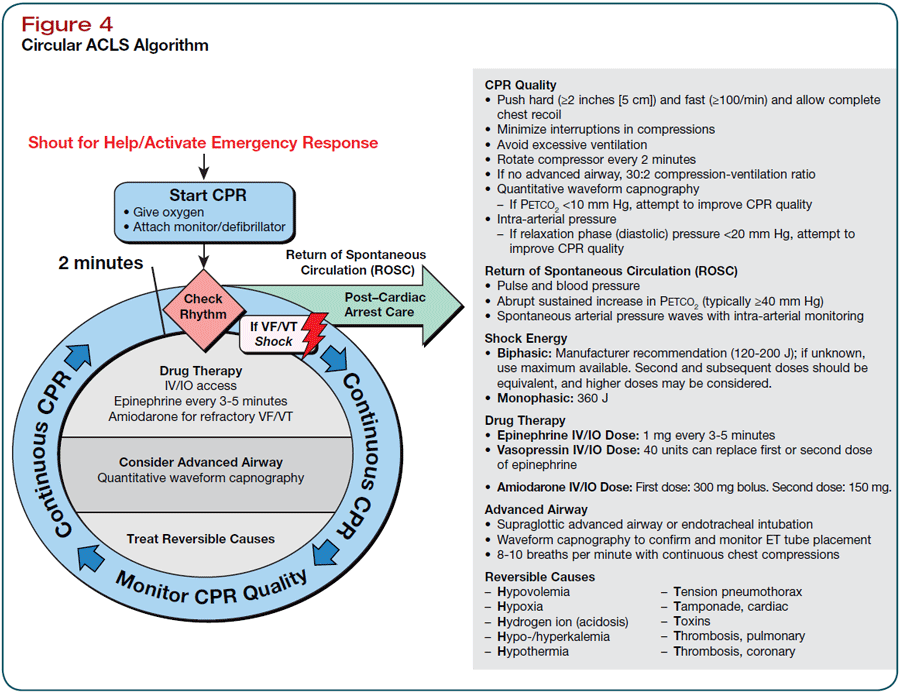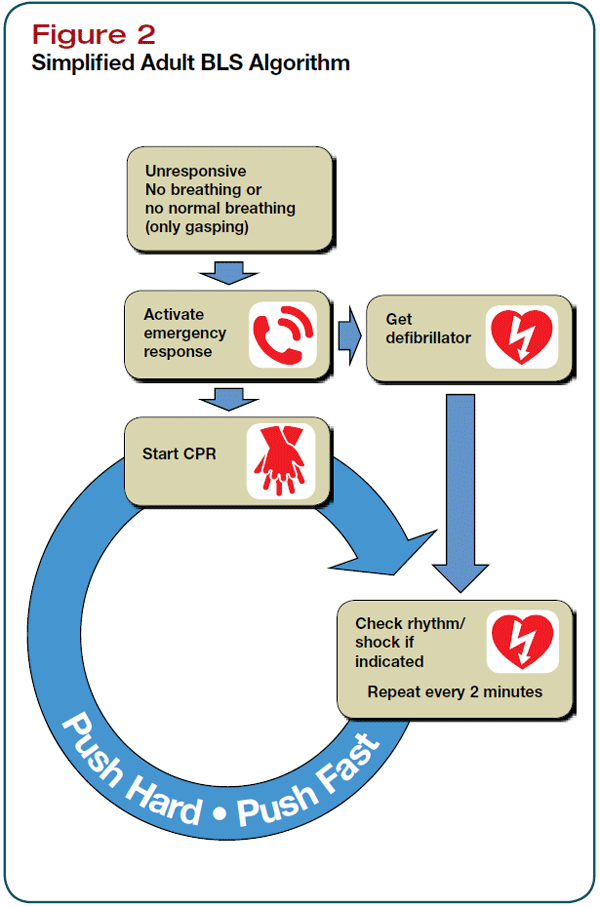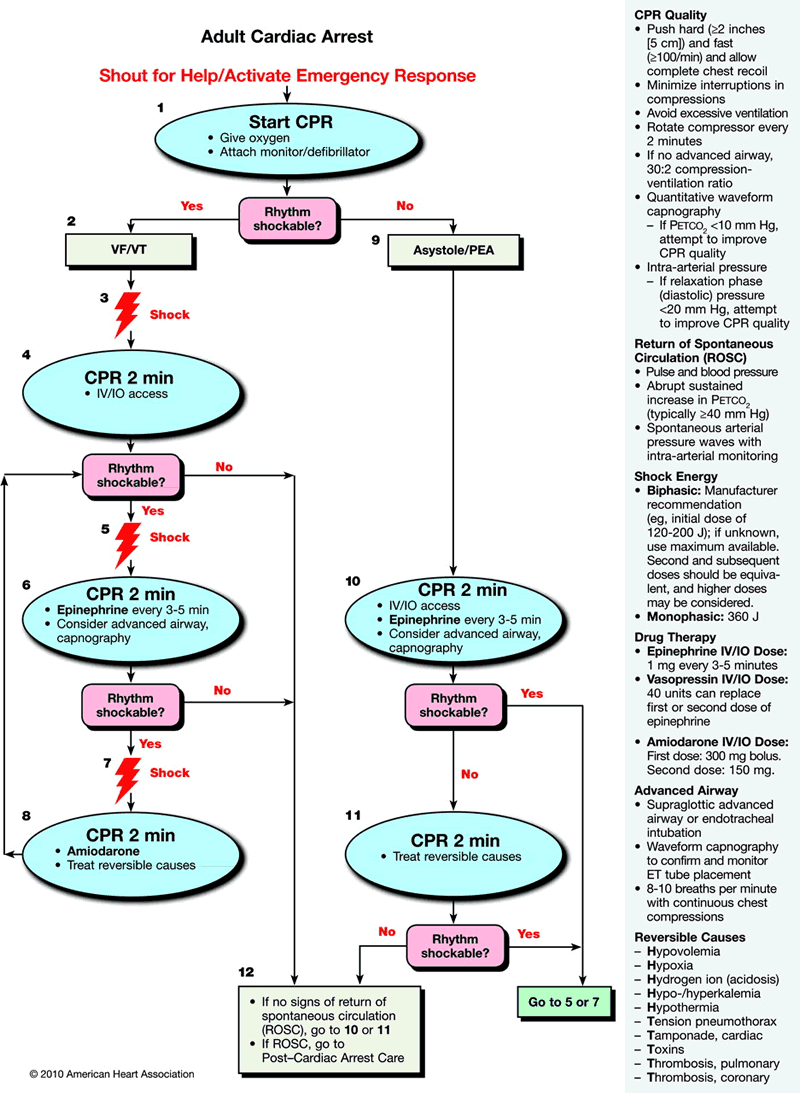2010 ACLS Guidelines

AHA 2010 guideline updates

Continued emphasis on high quality CPR with minimal interruptions
- Change sequence from "ABC" to "CAB"
- Chest compressions first then ventilations after first cycle
- "Look, listen, Feel" removed from the algorithm
- Pulse checks de-emphasised
- No difference between witnessed and unwitnessed arrest protocols
- Non-trained bystanders should provide "Hands-only" CPR
- Compression rate at least 100/minute
- Compression depth of at least 5cm (adults)

- Complete chest recoil after each compression
- Minimise interruptions in compressions
- Avoid excessive ventilation
- Emphasis on team approach with multiple simultaneous interventions
Electrical therapy
- Lay people encouraged to use an AED, even without training
- Initial biphasic shock for AF is 150J
- Adults with stable monomorphic VT - trial synchronised 100J
ACLS
- Routine cricoid pressure not recommended
- Use continuous capnography if intubated
- Emphasis on high quality CPR
- Atropine no longer used in PEA/Asystole
- Adenosine is recommended in stable, undifferentiated, regular monomorphic wide complex tachycardia
- Trial of chronotropic drugs before pacing suggested for unstable bradycardia
Post cardiac arrest
- Therapeutic hypothermia and percutaneous coronary interventions encouraged
- Pos arrest O2 titrated to keep SaO2 >94%
Further notes
- Vasopressin and Adrenaline are equally efficacious after cardiac arrest [BestBets]
- Biphasic defibrillation is best treatment [Level 2 evidence] for adult VF and should be used when available [BestBets]
